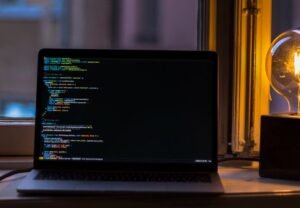Deepfake Politics
In recent years, the rise of deepfake technology has become increasingly worrisome, particularly in the realm of politics. Deepfakes refer to manipulated videos or images created with the help of artificial intelligence, which convincingly depict individuals saying or doing things they never actually did. This article explores the implications of deepfake politics and its potential impact on the public’s perception of reality.
Key Takeaways:
- Deepfake technology allows for the creation of manipulated videos and images that can deceive viewers.
- Politicians and political figures are vulnerable to deepfake attacks, which can spread false information.
- The use of deepfakes in politics can undermine trust in public figures and institutions.
- Mitigating the effects of deepfake politics requires a combination of technological advancements and media literacy.
**Deepfake politics** pose a significant threat to the integrity of political discourse. Deepfake videos can be incredibly realistic, making it challenging for viewers to distinguish between what is real and what is fabricated. *The widespread distribution of deepfake content can create confusion and misinformation, impacting the public’s ability to make informed decisions.*
1. **The vulnerability of politicians**: Politicians and political figures are often targeted by individuals or groups who seek to manipulate public opinion. Deepfake technology amplifies this vulnerability by enabling the creation of persuasive fake videos or images that can damage reputations or influence elections.
2. **Spreading false information**: Deepfakes have the potential to spread false information on a massive scale. A well-crafted deepfake video can be shared widely before its authenticity is questioned, leading to the dissemination of misinformation and the erosion of public trust.
3. **Undermining trust**: The use of deepfakes in politics can erode trust in public figures and institutions. When people can no longer trust their elected officials or the information they receive, it becomes increasingly difficult to maintain a functioning democratic society.
4. **Mitigating the effects**: Combating the effects of deepfake politics requires a multi-faceted approach. Technological advancements that detect and flag deepfakes need to be developed and implemented. Additionally, media literacy education is essential to equip individuals with the skills necessary to critically evaluate information they encounter online.
Impact of Deepfake Politics on Elections
| Year | Country | Effect on Elections |
|---|---|---|
| 2016 | United States | Deepfake videos targeted candidates, spreading disinformation and influencing public opinion. |
| 2019 | India | Deepfake videos were used to defame political candidates, leading to polarization and mistrust among voters. |
Public Perception of Deepfakes
The public’s perception of deepfakes plays a crucial role in the effectiveness of deepfake politics. *When individuals are aware of the existence of deepfake technology and its potential impact, they are more likely to approach political content with skepticism.* However, the rapid advancement of deepfake technology poses a challenge, as even professionals can struggle to identify sophisticated deepfakes.
**Table 1**: Misinformation Spread by Deepfakes
- Fake news
- Manipulated speeches
- False endorsements
- Incendiary statements attributed to politicians
Combating Deepfake Politics
Addressing the threat posed by deepfake politics requires a multi-pronged approach involving technology, legislation, and education. Governments, social media platforms, and tech companies must collaborate to develop effective detection and prevention tools. *Education initiatives that promote critical thinking and media literacy are crucial in equipping the public to identify and reject fabricated content.*
Deepfake Regulations Worldwide
| Country | Year Enacted | Key Provisions |
|---|---|---|
| United States | 2020 | Bans deepfake videos that deceive voters within 60 days of an election. |
| South Korea | 2019 | Requires disclosure when videos are manipulated or synthesized. |
The Future of Deepfake Politics
As technology continues to advance, the threat of deepfake politics may become more pervasive. Governments, tech companies, and individuals must stay vigilant in their efforts to combat the spread of misinformation and protect the integrity of democratic processes. *Developing robust detection tools and fostering media literacy are key to mitigating the harmful effects of deepfake politics.*

The Common Misconceptions
Deepfake Politics
There are several common misconceptions surrounding deepfake politics. By understanding and addressing these misconceptions, we can better navigate the impact of deepfake technology on political discourse.
- Deepfakes are easily recognizable and can be quickly identified.
- Deepfakes are primarily used to manipulate election outcomes.
- Deepfakes are solely a threat to political figures.
1. Deepfakes are easily recognizable and can be quickly identified.
One of the prevalent misconceptions about deepfake politics is that it is easy to spot a deepfake and distinguish it from genuine content. However, with advancements in deepfake technology, the line between real and fake becomes increasingly blurred. It is becoming more challenging to detect deepfakes without using advanced tools or techniques.
- Deepfakes can be further enhanced by AI, making them highly realistic.
- Visual inconsistencies in deepfakes can be minimized through sophisticated editing techniques.
- The average viewer may not possess the necessary expertise to identify a deepfake accurately.
2. Deepfakes are primarily used to manipulate election outcomes.
While there have been instances where deepfakes have been used to manipulate political campaigns, it is incorrect to assume that this is their primary use. Deepfakes can also be employed for other purposes, such as discrediting political opponents, spreading misinformation, or generating chaos within political environments.
- Deepfakes can be leveraged to undermine public trust and faith in political institutions and processes.
- They can be used to disrupt political debates by injecting false narratives.
- Individual politicians or political parties may also use deepfakes as a tool for character assassination.
3. Deepfakes are solely a threat to political figures.
Another misconception is that deepfakes only pose a threat to well-known political figures. In reality, deepfakes can target anyone, including ordinary individuals. It is essential to recognize that the impact of deepfake politics extends beyond politicians; it can affect public perception, trust in information, and even interpersonal relationships.
- People in influential positions, including journalists or activists, can be targeted to manipulate public opinion.
- Deepfakes can be used to fuel divisions among communities or promote hate speech.
- The reputation and credibility of individuals who become victims of deepfakes can be severely damaged.

The Rise of Deepfake Technology
Over the past decade, deepfake technology has emerged as a controversial tool that allows for the creation of highly realistic fake videos. These manipulated videos use artificial intelligence to superimpose the face of one person onto another, making it appear as if they are saying or doing things they never actually did. While initially used for entertainment purposes, deepfakes have become a growing concern in politics due to their potential to spread disinformation and manipulate public opinion.
Effects of Deepfake Videos on Political Landscape
Deepfake videos have the power to influence political discourse and elections by manipulating public perception. Below is a compilation of important data showcasing the impact of deepfake videos in the political arena.
The Role of Deepfakes in Disseminating Misinformation
Deepfake videos can be utilized to spread misinformation and falsehoods at an alarming rate. Analyzing the prevalence of this manipulation provides valuable insights into the issue.
Countries Most Affected by Deepfake Politics
Deepfakes have had distinct impacts in various countries around the world. The following data highlights the nations that have been particularly affected by deepfake politics.
Public Perception: Trust in Deepfake Videos
Trust is a fundamental aspect of any society, and deepfakes can erode public trust. Examining public opinion regarding the credibility of deepfake videos sheds light on the magnitude of this issue.
Deepfakes and Election Interference
Election interference is a pressing concern, and deepfakes have the potential to exacerbate this problem. Understanding the relationship between deepfakes and election interference is crucial in safeguarding democratic processes.
Legal Measures and Policies Addressing Deepfakes
Governments and institutions have implemented legal and policy measures to combat the misuse of deepfake technology. This data highlights the efforts being taken to mitigate the dangers posed by deepfakes.
Technological Advances in Deepfake Detection
As deepfakes become more convincing, it is essential to develop effective methods for detection. This table displays technological advancements in detecting deepfake videos.
Awareness and Education Campaigns
Increasing awareness and educating the public about deepfake technology is crucial in minimizing its impact. The following data presents noteworthy campaigns raising awareness about deepfakes.
Future Implications: Deepfakes and Politics
The dangers posed by deepfake politics extend far beyond their current influence. Examining potential future implications illuminates the need for proactive measures to combat this phenomenon.
Conclusion
Deepfake technology has emerged as a significant threat to the political landscape, amplifying concerns related to disinformation, election interference, and public trust. This article has explored the various aspects of deepfake politics, including their effects, prevalence, detection methods, and implications. Addressing these challenges requires a multi-faceted approach, including legal measures, technological advancements, and public education. Only through such comprehensive efforts can society mitigate the impact of deepfake politics and safeguard the integrity of democratic processes.
Deepfake Politics
Frequently Asked Questions
Q: What is deepfake technology?
A: Deepfake refers to the use of artificial intelligence (AI) to create manipulated videos or images that appear realistic but are actually fabricated. It involves superimposing or replacing a person’s face or creating entirely fake content using powerful algorithms.
Q: How is deepfake technology being used in politics?
A: Deepfakes are increasingly being used to spread misinformation, propaganda, and fake news in the realm of politics. Political figures can be targeted with manipulated videos that distort their statements, actions, or appear to say or do things they never actually did.
Q: What are the potential risks of deepfake politics?
A: Deepfake politics poses several risks. It can undermine public trust in political figures, lead to false accusations, influence elections by spreading fake information, and create social unrest. It has the potential to disrupt democracy and sow discord among the public.
Q: How can deepfake videos be detected?
A: Detecting deepfake videos can be challenging as they are designed to be highly deceptive. However, advanced algorithms and AI tools are being developed to analyze inconsistencies or artifacts within the videos, such as unnatural facial movements, mismatched lip synchronization, or visual discrepancies.
Q: What measures are being taken to combat deepfake politics?
A: Various organizations, including tech companies and research institutions, are investing in the development of deepfake detection technologies. Additionally, policymakers are considering legal frameworks to address the issue, and public awareness campaigns are being initiated to educate people about the risks of deepfakes.
Q: Are there any laws specifically targeting deepfake politics?
A: While there are existing laws that can be applied to deepfakes, such as those related to defamation, fraud, or copyright infringement, specific legislation targeting deepfake politics is still emerging. Some countries have proposed or enacted laws aimed at regulating the creation and dissemination of deepfakes for malicious purposes.
Q: Can deepfake technology be used for positive purposes in politics?
A: While deepfakes are primarily associated with negative implications, there are potential positive applications in politics as well. For example, it could be used to create deepfake videos or images demonstrating the consequences of certain policies or speeches. However, ethical considerations and responsible usage are crucial in any such use.
Q: How can individuals protect themselves from falling for deepfake politics?
A: To protect oneself from falling for deepfake politics, it is important to verify the authenticity of the content. Check multiple trustworthy sources, cross-reference the information, be critical of sensational or questionable content, and educate yourself about the latest deepfake technologies.
Q: How can social media platforms address the spread of deepfake content?
A: Social media platforms are actively working on implementing policies to combat the spread of deepfake content. This includes investing in AI technology to detect and flag potential deepfakes, collaborating with fact-checking organizations, and providing educational resources to users about identifying and reporting deepfakes.
Q: What should I do if I come across a deepfake video or image?
A: If you come across a deepfake video or image, it is advisable to report it to the relevant platform or authorities. Most social media platforms have reporting mechanisms in place for fake or harmful content. Additionally, sharing awareness about the existence of deepfakes and not spreading them further is crucial.




